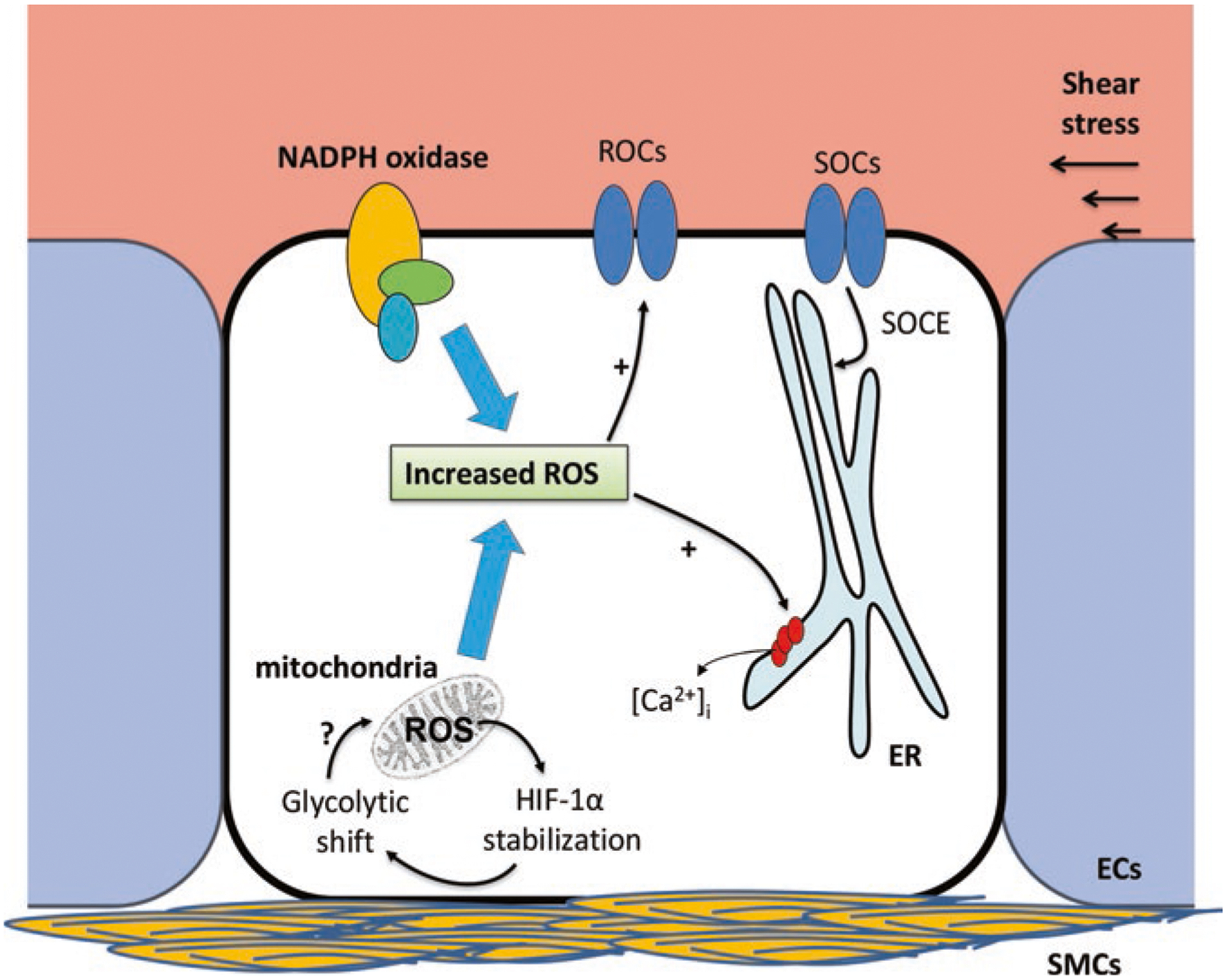Fig. 2.

Mechanisms of reactive oxygen species (ROS)-induced Ca2+ entry in endothelial cells (ECs) in pulmonary arterial hypertension (PAH). Increases in ROS from cytosolic (primarily NADPH oxidase) and mitochondrial sources can lead to both release of Ca2+ from internal endoplasmic reticulum (ER) stores as well as influx through receptor-operated (ROC) and store-operated (SOC) channels on the cell membrane. Release of Ca2+ from the ER can activate SOCs in order to replete ER Ca2+ stores via store-operated Ca2+ entry (SOCE). The sources of increased ROS in ECs include: NADPH oxidase, mitochondria and physical stimuli like shear stress. Based on data from both ECs and smooth muscle cells (SMCs) in PAH, mitochondrial ROS generation may be linked to abnormal HIF-1α stabilization and glycolytic shift
